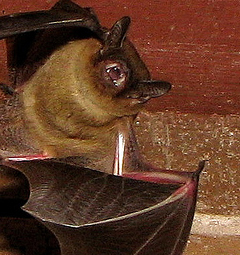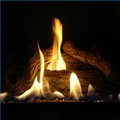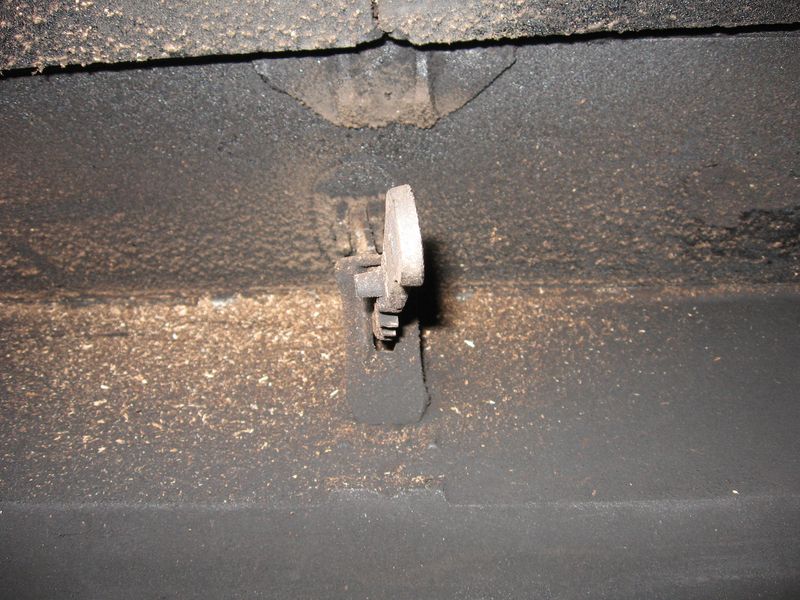
by blogediter | Mar 5, 2018 | Chimney Plugs
Bat in Chimney
Q: Jason, I have quite a few bats in my chimney. I had one sneak down through the damper last night and start flying around the house until I whacked him. This bat thing is not cool! Will a Chimney Balloon keep them out of the house and how do I get the bats out of the chimney? – BG
A: Hi BG, I have had to whack a few interior bats in my day too. The little critters can get through a gap as small as 3/8 inch so they can get in about anywhere. A fireplace chimney damper is often as good of a place as any to gain entry to your home since there are often gaps in the damper door once they start warping from the heat.
Here is what you do… Get a Chimney Balloon installed just above your damper door and seal the flue nice and tight and inflate the Chimney Balloon nice and tight. Then go to the roof (if you have access to the chimney and take a cloth bag with some moth balls in it and toss it down the chimney so it lands on the top of the Chimney Balloon. The mothballs will annoy the bats and they will fly up and out to get away from it. Make sure you don’t just do the mothballs without the Chimney Balloon though since you could end up coaxing them right into the house if you don’t have the chimney sealed off above the hearth.
Since the Chimney Balloon is in there tight the smell from the mothballs should stay in the chimney not enter the home.

by blogediter | Feb 14, 2018 | Chimney Plugs
Vented gel burner log
Q: I have a small, 100-year-old fireplace that I do not use because the chimney is unlined and I can’t afford to get it lined. There’s no damper either. I have decided to put a fake log and an alcohol gel burner (ventless) in there for the ambiance and a small bit of extra heat. I intend to block off the top of the firebox with a steel plate and fireplace caulk. This should keep air from going up the chimney, but will not stop heat loss via radiation.
Do you think, if I installed a Chimney Balloon 4 to 6 feet above the metal plate, it would survive? These gel burners put out 3000 BTU per hour per can, and I might at times burn 3 cans at a time, for a total 9000 BTU per hour. The flames would not be high enough to touch the metal plate. Thanks, ADH
A: Dear ADH, The Chimney Balloon will trigger its release at about 180-200 degrees Fahrenheit. I am certain it will only take about 5 minutes for a couple of rocket fuel… I mean… gel fuel, canisters to get the flue temp on the other side of your metal plate up to that temp. That metal will conduct pretty well once you get it cooking.
I do want to give you a fair warning about the adaptations you are planning to do to your fireplace. This type of DIY fireplace project is what makes home insurance agents get ulcers. When you self-seals a fireplace flue with a metal plate in order to save heat you are definitely taking your chances. The heat will spill around the lintel of your fireplace and go right up to the mantle and be facing wall. When your mantel clock bursts into flames and your Hummel figurines neatly arranged on the mantle melt from the spilled heat it will be a bit too late to correct the error.
I’m being tongue-in-cheek here, but seriously, altering an existing fireplace to trap heat is not a DIY kind of thing. I don’t even know many fireplace professionals that will try it (unless it is at their in-laws). You might luck out and fix it up just right, and you might create a real safety risk. – Jason
Q: Jason, Thanks for your input about the chimney pillow and the concern about the fireplace adaptation. Before planning to do all this, I consulted specs from several manufacturers for ventless gas logs placed in existing fireplaces.
According to specs, ventless gas logs for this size fireplace, burned with the damper closed, can safely run at considerably more than 9000 BTU given the distance between the top of this particular fireplace opening (which has a hood) and the mantel. The metal plate will be in the same place a damper would be– if there was one– and dampers are metal, so I don’t see the problem. (It will only be touching firebrick and will be several inches back from the fireplace opening, also.)
A number of people in old houses here have had their fireplaces blocked off and big, honking gas logs installed without incident– seems to be standard practice around here anyway.
A: Dear ADH, I am very relieved to hear you researched it fully first, and it sounds like you covered your bases. Good luck with your fireplace project. – Jason

by blogediter | Aug 9, 2017 | Chimney Problems
Why do Dampers Leak Cold Air Even When They Are Closed?
Fireplace dampers are a 300+ year old invention. They are not much different today than they were 300 years ago. Here are 6 reasons dampers leak cold air:
- Dampers and their frames are made of cast iron or sheet metal, so even a brand new damper that has never been used is leaky. The metal on metal contact points do not close perfectly, and you cannot have weather stripping on a damper door or it will burn off when you use the fireplace.
- Dampers are heated unevenly with an open flame on a regular basis. This is a recipe for metal warping.
- Dampers conduct heat and cold because of their solid metal construction. There is no insulation or R-value to a damper door.
- Dampers get coated with creosote and soot. This coating tends to build up and cause a crust that further foils the metal on metal contact points. This crust can be removed with some scrubbing, but even chimney sweeps rarely spend time cleaning the damper itself. They just scrub the flue and smoke chamber.
- The hinges on a damper are crude mechanical devices usually consisting of two interlocking fingers or just a pivot point. They are not continuous like a piano hinge. If you push on the hinge side of a damper door, you will see there is not much holding it together.
- If you have a vented gas log that was professionally installed, the damper was blocked open or removed. According to code, when a gas log is installed the damper must be locked in a fully open position. This causes an enormous amount of heat loss.
As you can see, dampers are poorly designed to serve as a dam to hold back your interior heated air and to keep cold outside air from seeping in. Using a product like a Flueblocker, a Chimella or a Chimney Balloon in your dormant fireplace can go a long way to stop heat loss, make your home less drafty, and save money on heating and A/C bills.


